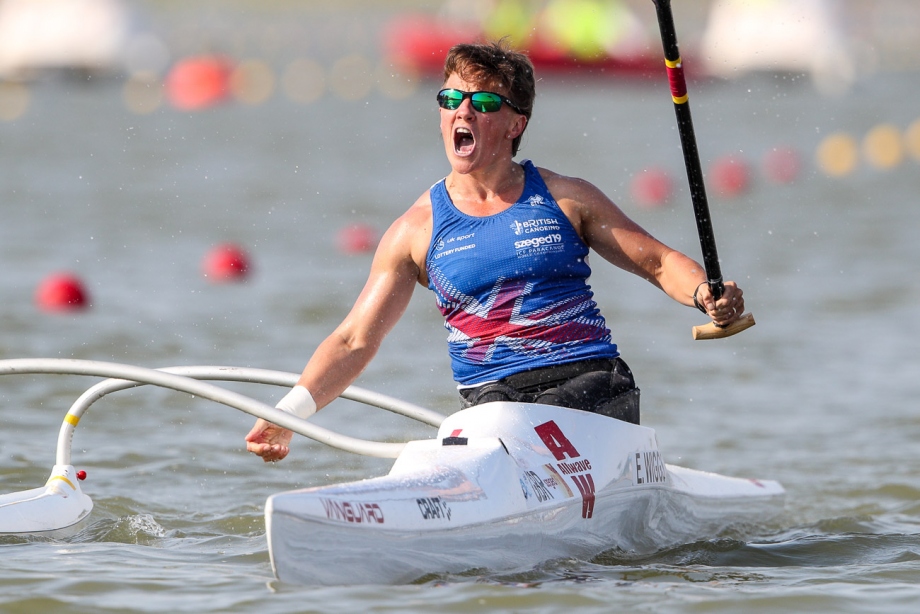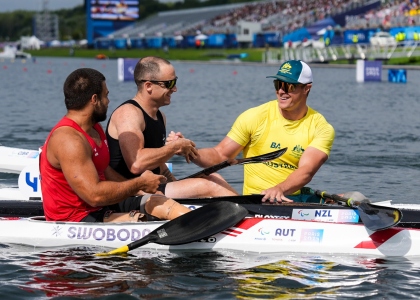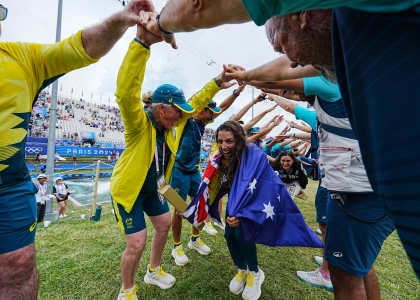More than 90 athletes from almost 30 countries have arrived in Tokyo to take part in the paracanoe competition at the Paralympics, the second time the sport has been part of the Games.
Six countries will make their paracanoe Paralympic debut – Belarus, India, Kazakhstan, Portugal, Uzbekistan and the Russian Paralympic Committee making a first appearance. For the first time paracanoe will also include an athlete on the IPC refugee team, with former Syrian Anas Al Khalifa earning selection.
Nine gold medals will be up for grabs over the three days of competition at the Sea Forest Waterway, an increase from the six gold medals on offer when paracanoe made its Paralympics debut in Rio in 2016.
The three additional medals will be contested in Va’a boats, with two races for men and one for women. The new discipline is competed in an outrigger canoe, which has an ‘ama’ as a support float on one side. Va'a is the name of the paddling discipline which has its origins in Polynesia.
The 90 quotas issued for Tokyo are an increase from 60 when paracanoe made its Paralympic debut in Rio in 2016.
Great Britain was the most successful nation in Rio with five medals, and will have the biggest team in Tokyo after qualifying eight boats. The Russian Paralympic Committee will have seven boats on its Paralympic debut, the same as Brazil, while Hungary and host nation Japan will have six each.
Nearly all of the gold medalists from Rio will be back to defend their titles, including Australia’s Curtis McGrath in the men’s KL2, Ukraine’s Serhii Yemelianov in the men’s KL3, Great Britain’s Jeanette Chippington in the women’s KL1 and Emma Wiggs in the women’s KL2, and Poland’s Jakub Tokarz in the men’s KL1.
Only McGrath and Yemelianov head to Tokyo as reigning world champions, highlighting the increased depth in international paracanoe since Rio.
Several athletes will have a chance to create history by winning two medals at a single Games by competing in both KL and va’a categories. Australia’s McGrath is the reigning world champion in both categories.
Para Va’a races were first held at the 2009 World Championships in Canada, but it was not accepted as a discipline at the Rio Paralympics because it was deemed not enough research had been done into the sport.
In the revised classification system, athletes will mainly be allocated a class based on their trunk function assessed during the dynamic tasks of the trunk test; no dynamic trunk function, partial dynamic trunk function and good dynamic trunk function.
The athletes allocated in the lowest functioning class, VL1, should therefore have no dynamic trunk function which is defined as not being able to sit upright on a bench with the legs hanging whilst the thighs and/or pelvis are secured and not moving the trunk in flexion, extension, rotation and lateral flexion.
These athletes should also not have any leg function.
The athletes with the highest function will be allocated the VL3 class and will include the athletes with full dynamic trunk function or almost full dynamic trunk function.





